An original version of this post has been shared to Patch Notes and Progress. Reflections from JNUC 2025 — automation, openness, and community taking Mac management to new heights. Denver, Colorado | October 6 – 9, 2025
Day 0 — Travel and New Connections
JNUC 2025 in Denver was my first in-person Jamf Nation User Conference — and my first time ever on a plane. Over three days, I watched Jamf redefine what MDM means in an API-first world, connected with the Mac Admins community I’ve long admired, and saw firsthand how automation, identity, and community are working to shape the next chapter of Apple device management services.
As mentioned in a previous post: Prepping for JNUC 2025, I had been awarded sponsorship by Jamf to attend this year’s Jamf Nation User Conference in Denver Colorado. Before I even left Pittsburgh, Jamf had already dropped next year’s headline: JNUC 2026 will be held in Kansas City, Missouri (Sept 23– 25), with early-bird registration open.

Convention Center
You can register now by visiting here, and as with every year, Jamf has published the 2026 Convince Your Boss letter template.
Three airports later — Pittsburgh to Minneapolis and then to Denver — I landedaround 3:45 PM Mountain Time, two hours behind my local Eastern Time zone inPittsburgh. With this being my first time ever flying, I have now been able to check it off of my bucket list. I quickly checked into my hotel and headed over to The Colorado Convention Center to register on site and pick up my JNUC goodie bag. That night, I joined the Console team, Founder/CEO Andrei, Growth Lead Alicia, and a few Mac Admins for dinner. Conversations ranged from AI in enterprise IT and even to “what is Mac Admins – the organization, the Slack, the community?” It set the perfect tone for the week ahead: community builds collaboration, and the Apple Mac Admins community is a very great place to be.
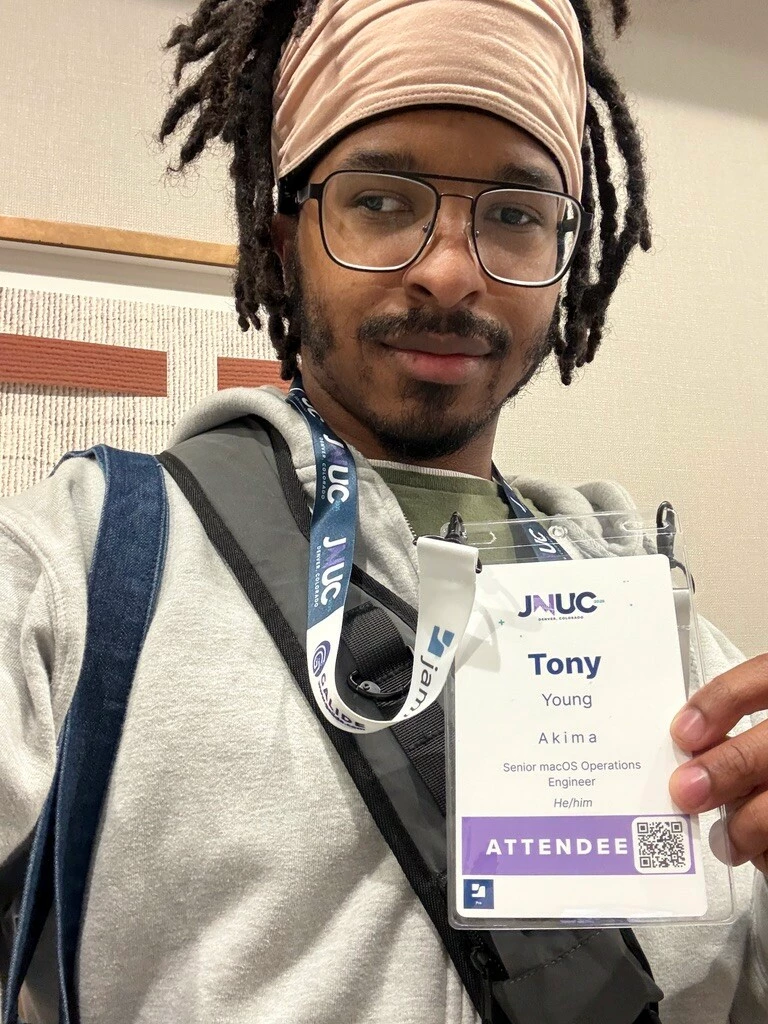

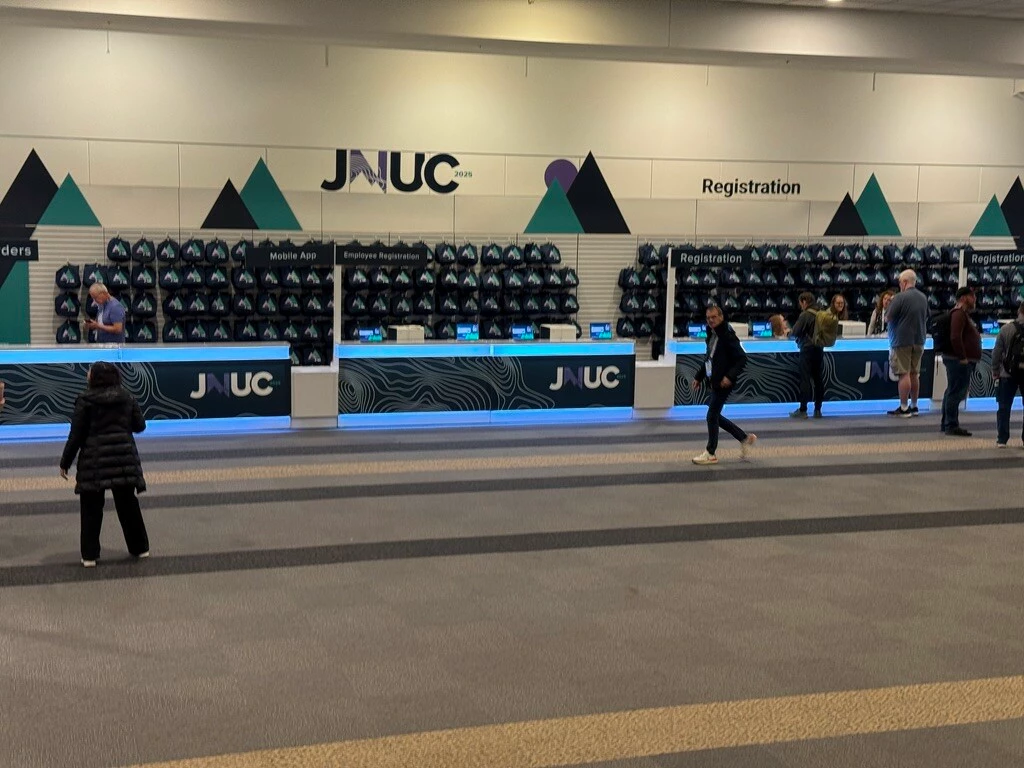

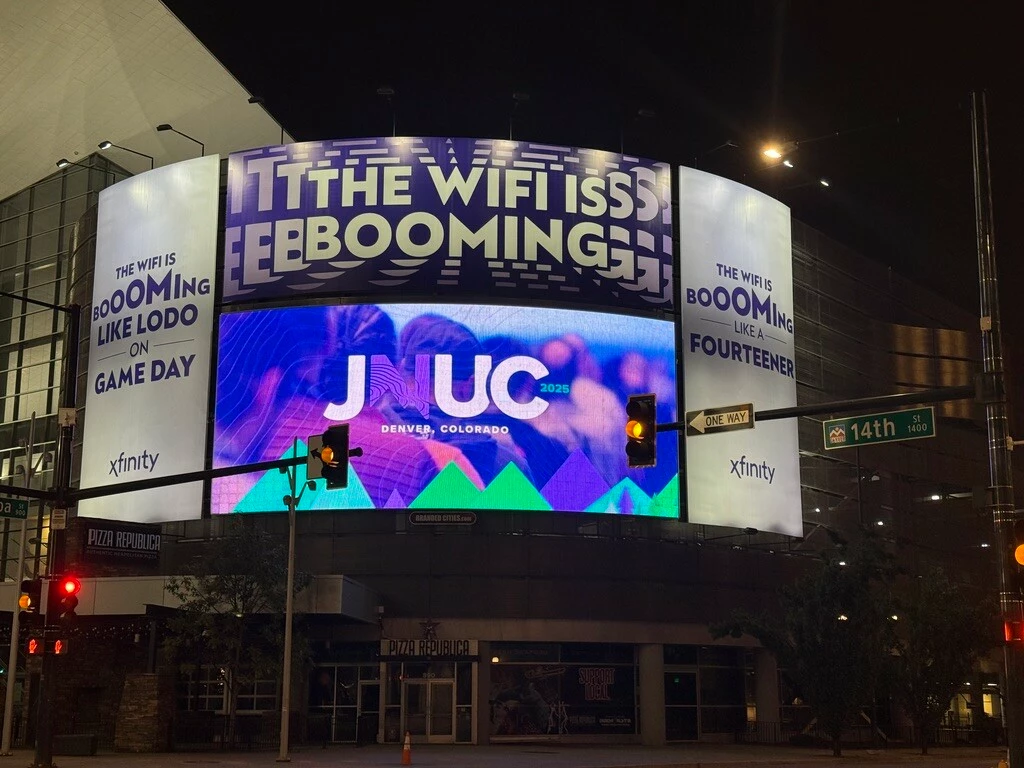
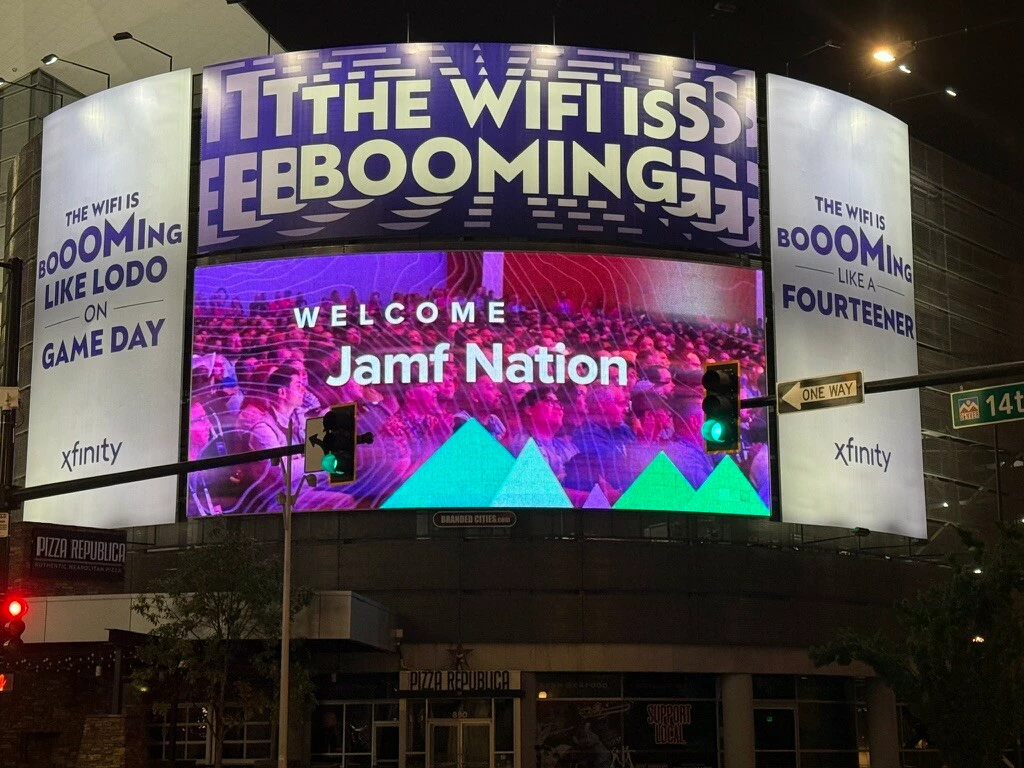
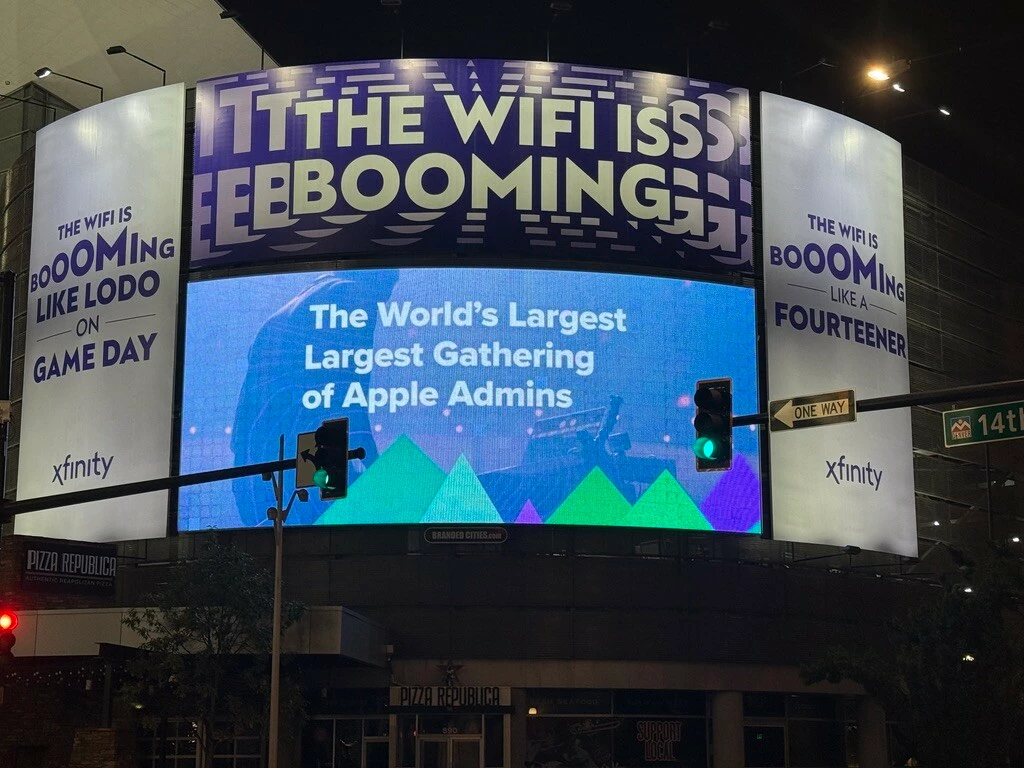
Day 1 — Keynote, Community, and Recognition
I woke around 4:30 AM Mountain Time, as my internal body’s clock still thought it was 6:30 AM Eastern Time, so I was up early. For breakfast, I met with former colleagues from a previous role that I had prior to my current Senior Operations Engineer role. While I am a very friendly person and will talk to anyone who talks to me, I don’t typically go out of my way to spark conversation with new people in person. It was extremely comforting to have folks I truly knew, who served as a sort of safe space, where I wasn’t left sitting at an empty table by myself until random folks showed up. From breakfast we walked what felt like a mile to the gorgeous Bellco Theater for the Keynote: Elevate with Jamf. Rather than restating everything, Jamf’s recap and video tell the story best. Read on: Official JNUC 2025 Keynote Recap
Quick Highlights:
New Platform API, AI Assist, Declarative MDM via Blueprints, and built-in Compliance Benchmarks signal Jamf’s next era — open, automated, auditable.
This year’s keynote emphasized Jamf’s transition from a management tool to a full platform for automation, compliance, and integration — a theme that echoed through nearly every session. I would say it felt much more of a developer focused keynote than a typical “here’s new features coming to individual products within the Jamf umbrella.” This year, Jamf focused on the tools to allow developers and admins alike unleash the power of automation to make all products within Jamf become more efficient and connected to one another. The rest of the day was a blur of sessions, Slack friends come to life, and hallway chats. A Platform Single Sign-on (PSSO) brain date let me swap notes with others solving the same identity-migration puzzle my own team faces.
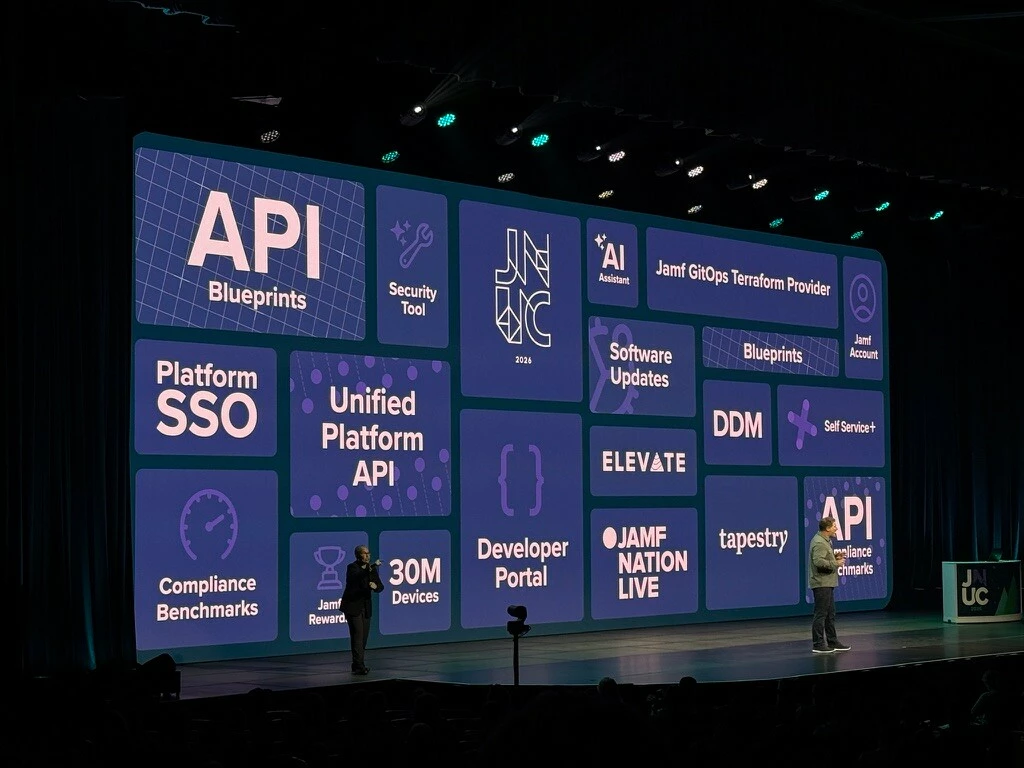
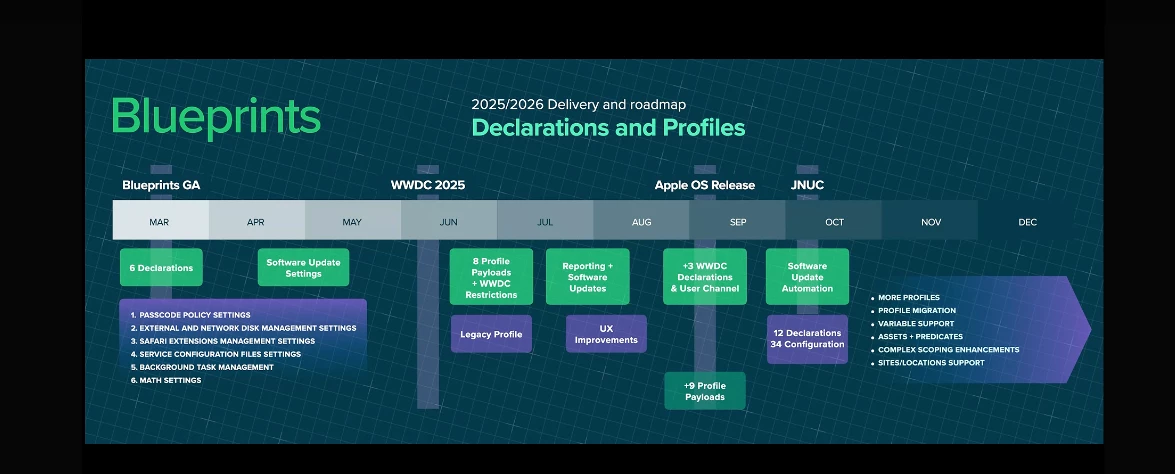

Then came a personal highpoint: being named RocketmanTech’sLaunchPad“Newcomer ofthe Year” duringtheir LaunchPad Awards Show.That community acknowledgment meant the world — proof that consistency and helping others really do ripple outward.

White of Macjutsu
I ended the day at Jamf’s DEIB Sponsorship Happy Hour, where I met other diversity- scholarship recipients and Jamf’s inclusion leads. It was equal parts professional and personal inspiration. I did not manage to do the Day Two Happy Hour Crawl afterwards as my body hit me with with tiredness. The Happy Hour Crawl was a thing due to there being about four or five different happy hours hosted by various organizations throughout the night for attendees to choose from.

Diversity & Inclusion Team given during
their DEIB Happy Hour.
Day 2 — Automation, APIs, and the Power of Open Tooling
If Day 1 was inspiration, Day 2 was implementation. I built my schedule for the day with a focus on automation:
- Infrastructure as Code with Jamf — Terraform + GitHub Actions for repeatable, testable configuration of Jamf Pro servers.
- Unleashing Smart Workflows with New APIs — unify Jamf Pro, Protect & Connect under one consistent API layer.
- Scoping Smarter with Entra ID — identity-driven policy targeting replacing device-only thinking.
- Super Friends — part what’s new, and part showcase of versatility of the open-source super tool and the community behind it.
One takeaway stuck with me from the Infrastructure as Code with Jamf session: "The intention long term is that if you want to never physically interact with a single GUI of any Jamf product, you would not have to - everything would be configurable through the API and automation/scripting."
Jamf is clearly steering toward an API-first future, and the sessions reinforced how essential scripting, version control, and modern DevOps habits have become for Mac Admins. At lunch, I joined Jamf’s leadership for the Diversity Sponsorship Lunch, discussing representation, mentorship, and leadership pipelines. We discussed things large and small, such as favorite tech tools, how we are automating, and even Jamf pursuing FedRAMP status (IYKYK). Being in the same room as CEO John Strosahl and Chief Customer Officer Sam Johnson, who we so often see on stage at JNUC, and so many others from leadership, had to be by far the best part of the entire conference for me, personally. We held personal talks while enjoying great food. Jamf Leadership spent time with each of the DEIB-sponsored attendees to discuss life, career, and all things tech. One conversation I had was when John Strosahl asked, What is a position we are pursuing and see ourselves in the next five years. My answer was that while I love “being in the work, and doing the things”, my year spent trying to be as active and as helpful as I possibly could be makes me wish a dedicated, paid teacher/mentor/advocate role existed that helped train up the next generation of Mac Admins. I felt that role wouldn’t necessarily follow the path of a people manager, a technical IC, or even a staff engineer. I like to think he was pleasantly surprised by such an answer as he spoke highly of the need for community. Those conversations re-anchored my five-year vision for both technical mastery and community impact.
The evening wrapped at the Jamf Nation Party in McGregor Square Plaza — hundreds on hundreds of admins, live music, and that familiar mix of nerd talk and laughter that only this crowd brings.

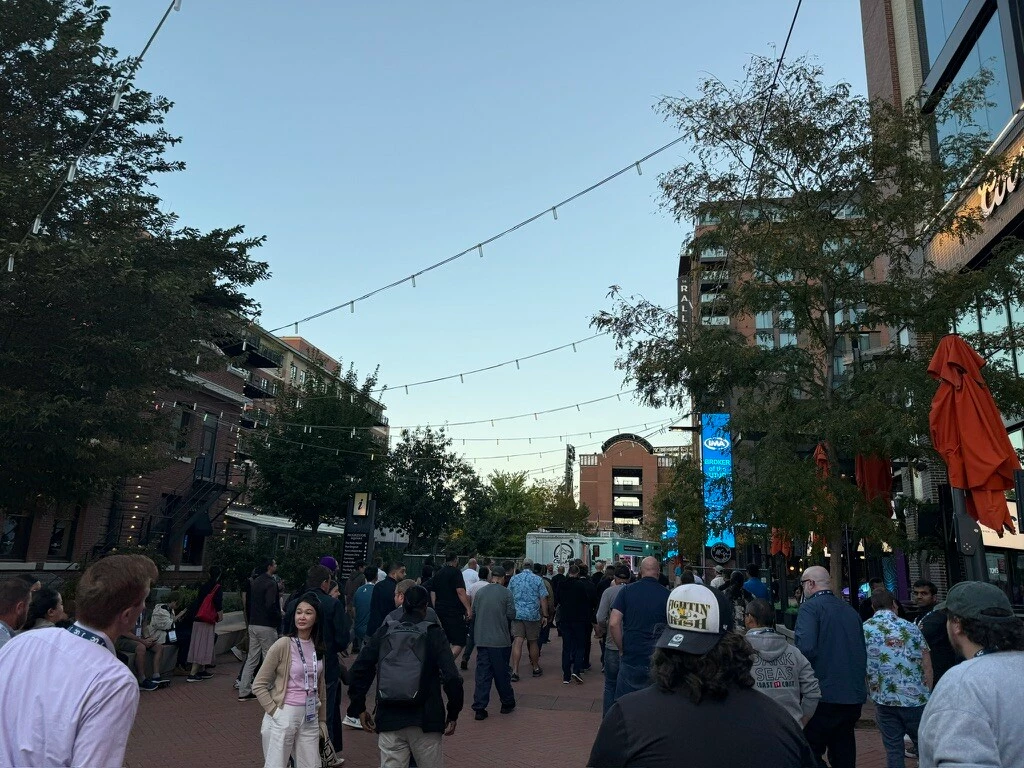

Day 3 — Profiles 3.0 and Heading Home
Thursday was intentionally short so attendees could travel, though I truly wish Jamf would consider extending the conference one day extra. After an early brain date to talk with Veronica Batista Bernard of Jamf to talk Intune vs Jamf (I know…),I caught a final session, ending with Configuration Profiles 3.0 – Everything Everywhere All at Once. Veronica also hosted a JNUC Session: Making Your Business Case for Jamf When Your Boss Is Asking You to Explore Other Options,
which I will have to go back and watch as I was unable to attend live, so the braindate, being a condensed conversation, was very helpful in the absence of attending the session.
This talk marked a quiet but fundamental shift: Jamf is sunsetting legacy payloads, in line with all that Apple itself has been doing in favor of Blueprints + Legacy Configuration — embracing declarative, modular management over the monolithic profiles of old. For example, Mac Admins have been asking, begging even, Jamf to dramatically fix the Jamf Restrictions Payload and its “you must choose on/off for every single possible item within the list”. For years, we thought
we would get a more modern approach, as we see in other payloads that have the “include/don’t include” toggle switch. Instead, Jamf has abandoned the Restrictions profile, and Admins should deploy Restrictions through Blueprints if they need that, including/excluding capabilities.
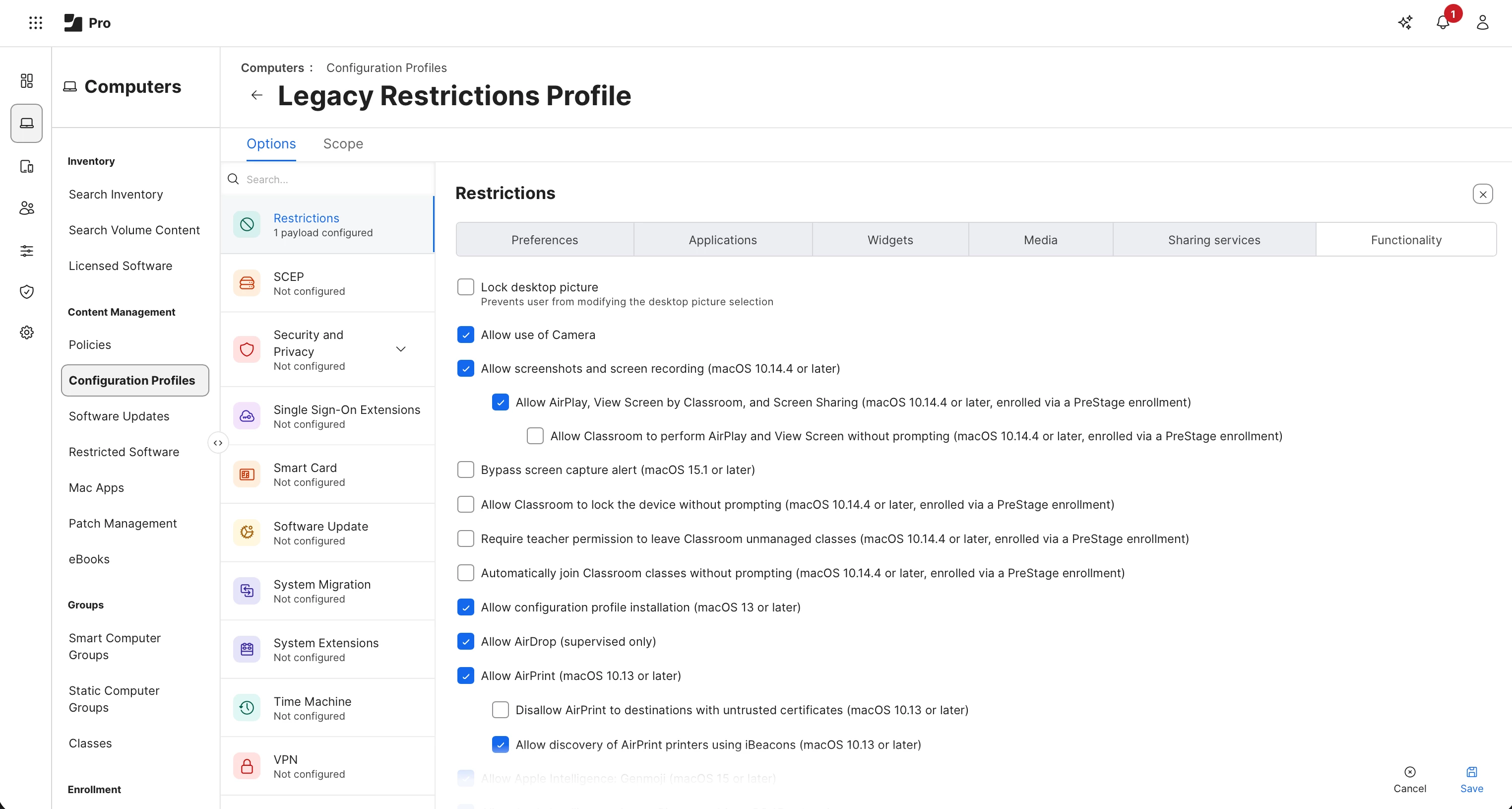
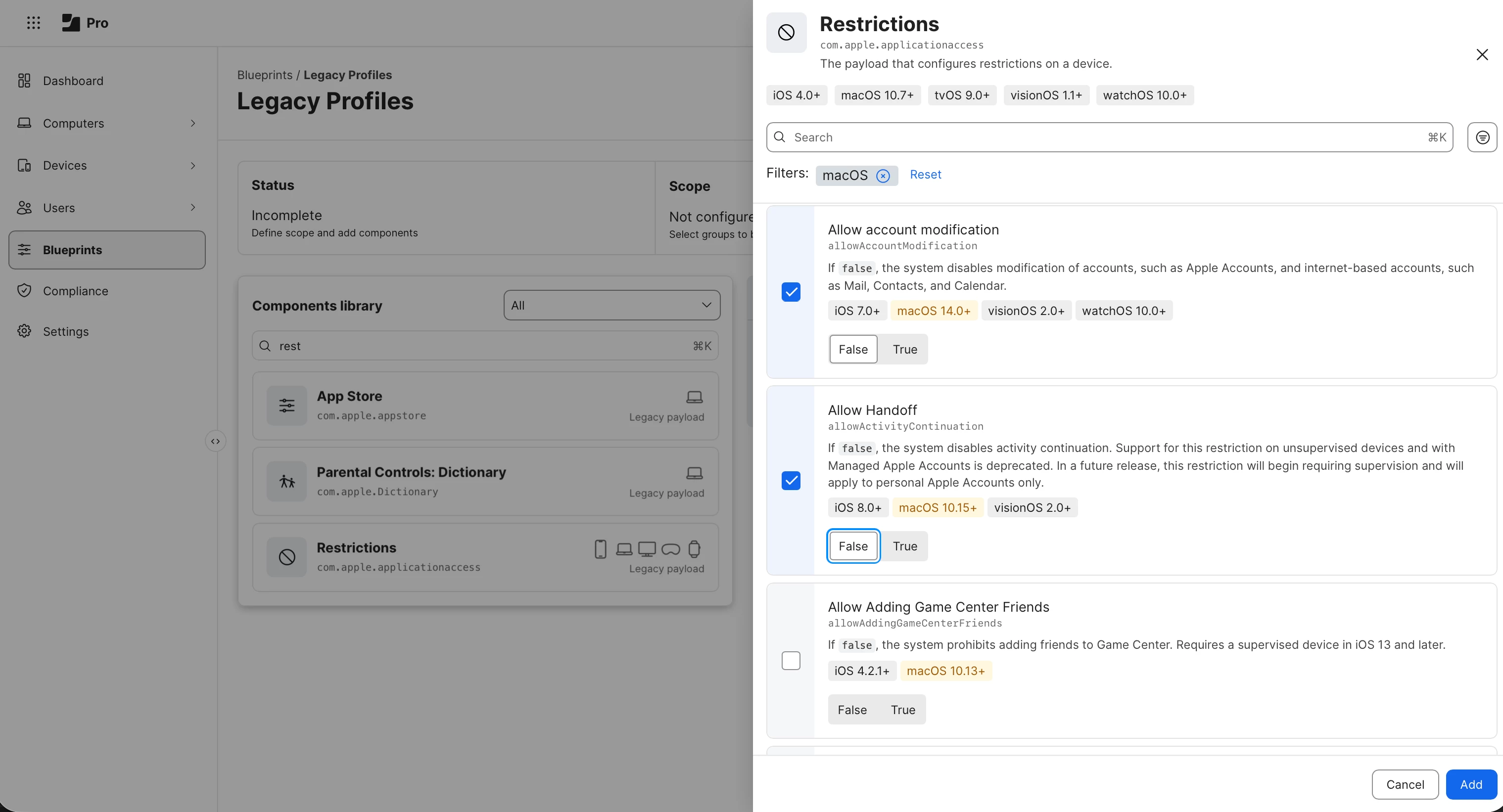
After lunch, I took one last chance to say goodbye to friends, colleagues, Jamfs and more. I made time to have a moment to admire the beautiful art that was installed around the convention center, then I packed up, caught two flights, and
landed back in Pittsburgh — tired but energized.
What JNUC 2025 Proved About the Future of Apple Admin Work
1. Automation as Culture
Between Infrastructure as Code hosted by Ryan Legg, Shane Brown, Javier Robles, and Anthony Telljohann, Automating Apple Endpoints Management hosted by Tristan Valente and Neil Martin, the Webhooks Labs, and the new Platform APIs, the message was unmistakable: automation isn’t a bonus, it’s table stakes. Efficiency, security, and scalability now converge through event-driven workflows and versioned configuration.
2. Declarative Everything
The Profiles 3.0 and Blueprints sessions were built on Apple’s Declarative Device Management momentum. It’s the beginning of “set once, observe always” management — a model where policies describe the desired state rather than chase enforcement loops. Declarative management felt less like a concept this year and more like an expectation.
3. Community > Competition
Elevate with Jamf: Lift Off into the Future of Mac Administration at JNUC 2025 13Whether it was the LaunchPad Awards, Super Friends, or mid-day hallway chatter, gathering ideas and viewpoints of how to fix true organizational problems, the Mac Admins community proved again that collective knowledge moves the platform faster than any single vendor can.
4. Security Meets Experience
Talks like Flawless MDM Communication and RCC (Rocketman Command Center) reframed security and compliance not as constraints, but as enablers of better end-user experience — smoother scripts, cleaner logging, fewer disruptions.
Takeaways for the Enterprise
This week wasn’t just about the tools we use — it was about how we’ll use them in the next era of Mac management. The sessions, hallway conversations, and open- source showcases all pointed toward a more automated, auditable, and API-first ecosystem. Here are a few practical steps Mac Admins can start taking today to stay ahead of that curve:
1. Start exploring Terraform + Jamf workflows
If you’ve ever wished your Jamf configuration lived in version control, now’s the time to act. Terraform providers for Jamf Pro are maturing quickly, enabling Infrastructure-as-Code (IaC) workflows that can version, peer-review, and replicate your Jamf setup between environments. Even if you don’t migrate everything at once, start small — try managing a Smart Group or Policy via Terraform, commit it to GitHub, and run your first CI/CD test with GitHub Actions or GitLab CI. The payoff is traceability and reproducibility — two things compliance teams love. But in that same regard, IaC for Jamf Pro may not be for everyone or every team. “Click-Ops” is still here and perfectly fine. But I encourage everyone to explore new ways to enhance your workflows. As the technology continues to change and improve, so must we.
2. Audit your current Configuration Profiles before Blueprints roll out fully
Jamf’s Blueprints mark a significant shift toward declarative, modular management. But as new payloads arrive, conflicts with legacy profiles will become increasingly common. Run a full audit of existing configuration profiles now: Identify duplicates or overlapping restrictions. Document what’s still required under Blueprints. Test new declarative payloads in a sandboxed server before production. A little cleanup now will save hours of troubleshooting later — especially as legacy payloads begin to deprecate with macOS 26 and beyond.
3. Begin shifting toward identity-driven scoping with Entra ID or Okta
The move toward Platform Single Sign-on (PSSO) and Entra ID-based device compliance means the “device-first” mindset is fading. Policies, apps, and access should increasingly flow from user identity, not hardware group membership. Start testing Conditional Access integrations and identity-based scoping in a subset of devices. Evaluate how your groups, Smart Targets, and policies would behave if user identity became the primary driver. The goal is to make MDM context-aware — enforcing the right controls for the right users, in real time.
4. Join and participate in the MacAdmins Slack community
Nearly every major JNUC session tied back to collaboration — and no platform captures that better than the MacAdmins Slack. Whether you’re exploring APIs, declarative MDM, or open-source tooling like super, Rocketman Command Center, or installomator, there’s a dedicated channel (and someone who may have already solved your problem). With Jamf moving faster toward API extensibility, community-driven solutions will become essential. Join, listen, contribute, and stay connected — because the best documentation for the next era of Mac management isn’t a PDF or even a wiki, it’s a conversation.
The next twelve months will define if and how organizations transition from manual configuration to automated governance — and the Admins who invest early in reproducibility, identity integration, and community knowledge-sharing will be the ones shaping the standards everyone else follows.
Final Reflection
Jamf isn’t just patching tools together; they’re architecting a platform that mirrors how modern IT teams actually operate: cross-functional, API-driven, and human- centered.
For me personally, this trip was more than professional development — it was proof that investing in community pays real dividends, and that the future of Mac administration is equal parts scripting, empathy, and strategy. I’ve been stopped countless times in the hallway, even one time while on a FaceTime call with my family, to “you’re Tony Young from Slack right?” and have been asked questions about super , or told that this very blog has been extremely helpful to other admins. The excitement and curiosity around Terraform were strong, and many admins have clear plans to skill up in this area. Having the opportunity to meet so many people face-to-face has been the highlight of the year for me. I needed it more than I realized as I saw the real-world impact of my own commitment to the community. It helped to reignite the fire within myself to reassure myself I am on the right path in my life and career. I will admit that I do wish I had taken far more photos with people, as my daughter would say when putting new artwork onto our refrigerator, “for the memories.” I wish I had spent even more time in the hallways chatting with people and making far more connections, even if it meant missing a session or two, since the sessions were recorded and I’ll be able to watch them later. It’s in those brief interactions where ideas spark, collaborations are born, and a sense of belonging deepens. For me, the community, the conversations, and the connections far outweighed the technical takeaways. The people behind the tools are what make this ecosystem thrive, and I left with a renewed appreciation for just how open, generous, and creative the Mac Admin community truly is. I truly hope I’ll find my way back to JNUC — not just for the sessions, but for the people who make them matter.
I started the year very intentional to be as involved as I possibly could be within the Community, and it has been paying off every step of the way. As my plane descended back into Pittsburgh, I realized this week wasn’t just my first flight — it was my lift-off into the next phase of Apple administration: one defined by automation, openness, and community. My next step will be catching up with on- demand videos of the sessions I was unable to attend in person, reviewing all of my notes and prepare my team for the fresh ideas I’ll be bringing back with me as I return to work




